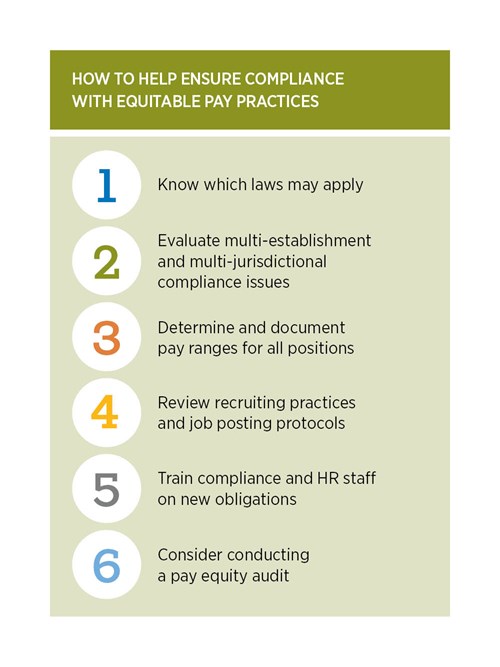
Shared perceptions of a fair-pay workplace are an important driver of employee satisfaction, especially as discourse on pay equity and employee value increases. To stay competitive and compliant, employers need to establish transparent pay practices that account for the growing number of related federal and state laws.
Updating old-school thinking about pay is a strategic opportunity for employers, often requiring a new approach to employee communication. Many have already taken it upon themselves to improve pay transparency, because they think it's the best move for meeting recruitment and retention goals and is simply the right thing to do.
Heeding the call for pay transparency
The Pay Equity Act of 1963 established equal pay for equal work, and since that time, other federal laws have pushed the ideals of equity forward. Joining other states, counties and cities, pay transparency laws are now on the books in California, Colorado, Rhode Island, Washington, and most recently Hawaii and Illinois.1 They're designed to help employees understand career opportunities and how their pay is determined, and some legislation protects workers from the need to disclose salary history.
Employees have long sought better pay and opportunities. Experiencing the COVID-19 pandemic further motivated many to more acutely assess their career path and job market value. Since then, employees have collectively gained better insight into compensation practices, and many now expect pay equity and ready access to compensation information. It hasn't taken long for employers to respond by accelerating pay transparency practices. Largely, they recognize this priority as essential to a competitive employee value proposition (EVP).
Accurate data is a prerequisite for effective communication and compliance, but out-of-date pay structures and recordkeeping practices hinder transparency. As headcount increases, so does the need for more sophisticated HR platforms. While some leading organizations already have these systems in place, many others could benefit from the technology's ability to help them meet regulatory and workforce demands.
The goal is to install pay transparency structures that allow employees, managers and leaders to understand why and how employees are getting the pay they receive. Expectations for access to this information are increasing, and that trend will likely continue. Salary ranges are fundamental, but other forms of total rewards — such as bonus structure, retirement programs and paid time off, including paid holidays — may now be required.

Basing program goals on compensation philosophy and legalities
An organization's compensation philosophy and total rewards strategy should be well defined while adhering to applicable regulations, including pay transparency laws. Full awareness of all requirements helps to prevent wage disparities based on race, gender and other protected classes. Setting standards also provides a basis for leaders to measure and correct potential disparities as they arise.
Each organization needs to determine the process for how they review compensation and benefits offered to employees, whether through market pricing, a performance pay system, a collective bargaining agreement or an alternative that's often a combination of factors. Fine-tuning total rewards as a regular practice supports fairness while helping to enhance employee engagement, alleviate risk and boost organizational performance.
Understanding requirements for disclosing compensation information during the recruiting and hiring processes, including what is shared and when, is more than just a compliance requirement. An employer's goal is to forge a partnership with their employees. Communicating this priority — and acting on it — shows a genuine commitment to workforce interests and wellbeing. In turn, the rewards may be a stronger commitment to the organization and higher retention.
Specific to compensation, pay ranges and additional information about total rewards help define the EVP. Salaries and work experiences are ongoing topics of discussion in the job market, whether interactions occur informally between employees or on websites and social media platforms. Employers can elevate their brand by gaining more control over the narratives as pay transparency laws become more commonplace.
Understanding the influence of employee expectations on pay and communications
The move toward pay equity through pay transparency shows that an organization has their employees' best interests in mind. Younger workers are often more open to discussing their pay with colleagues and newer laws may protect this choice as a right.2 Job seekers have also started to set their own rules. Many are less willing to respond to job postings that don't include compensation.3
No matter how much or how quickly pay transparency laws replicate across the country, hiring talent will likely require revisions to attraction and communication strategies. When determining how to best implement new practices, employers succeed when they carefully navigate regulatory complexities and consider the organization's unique population and culture.




